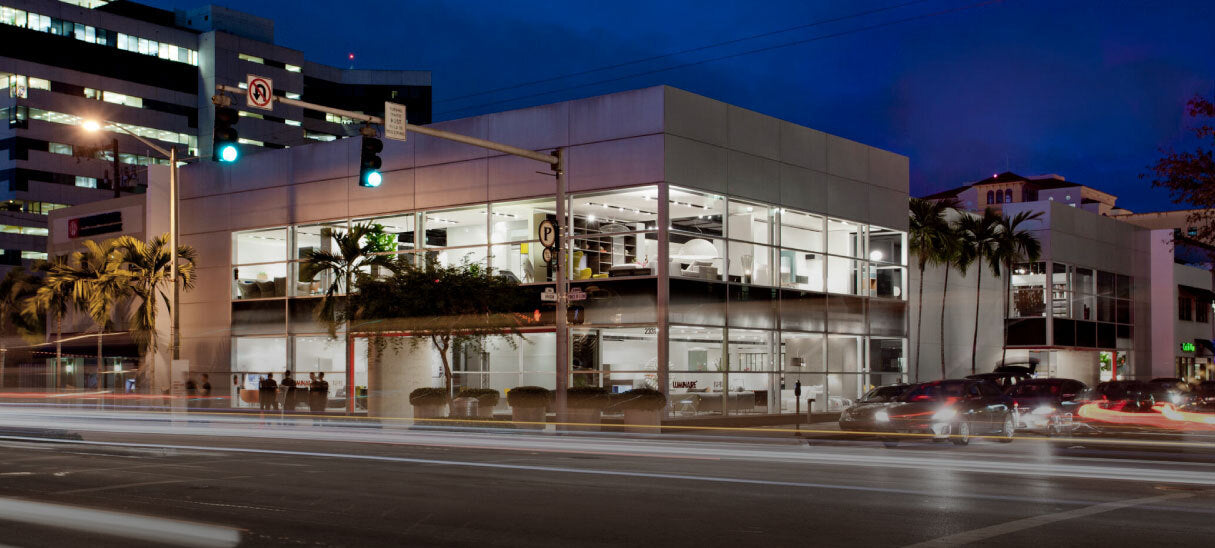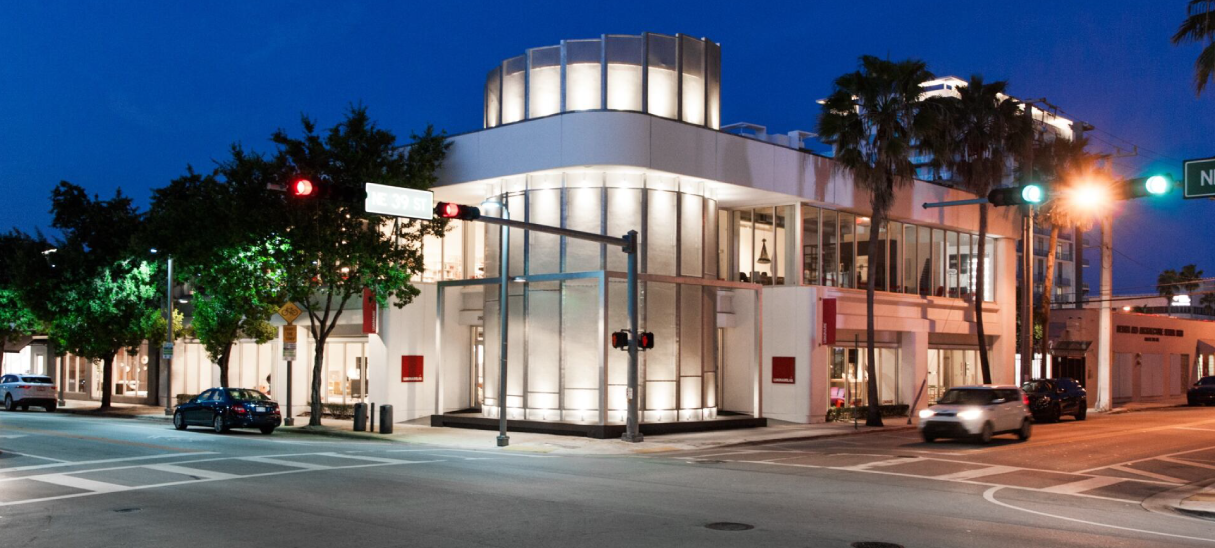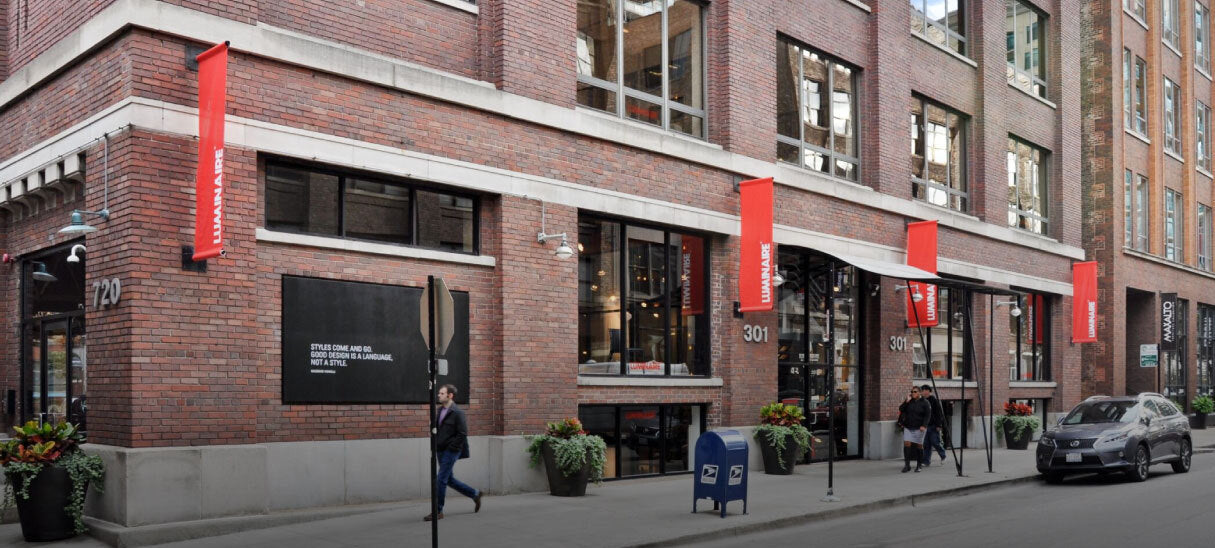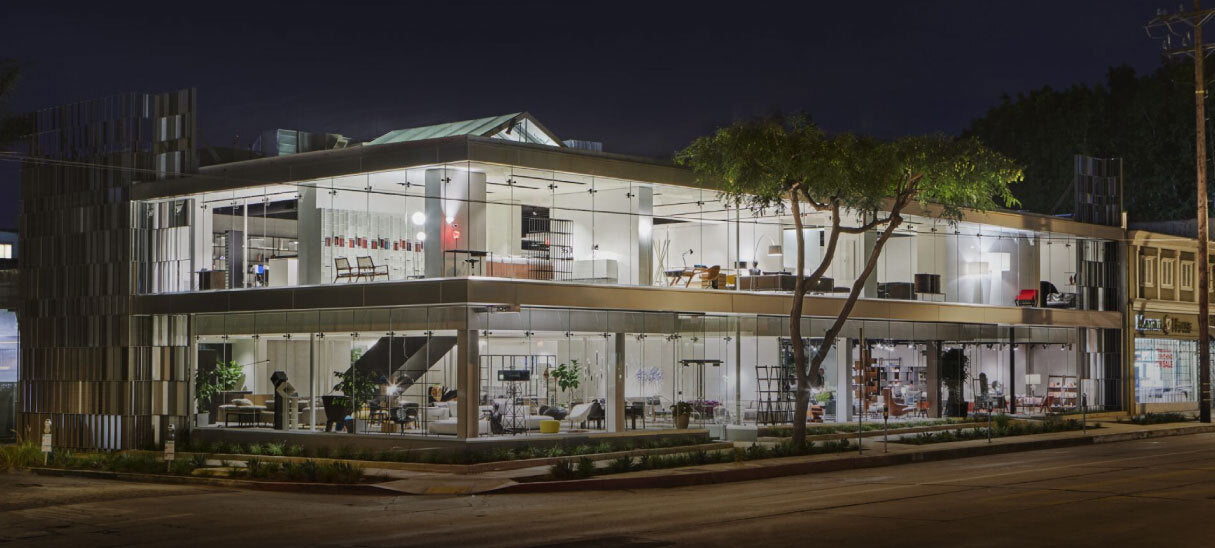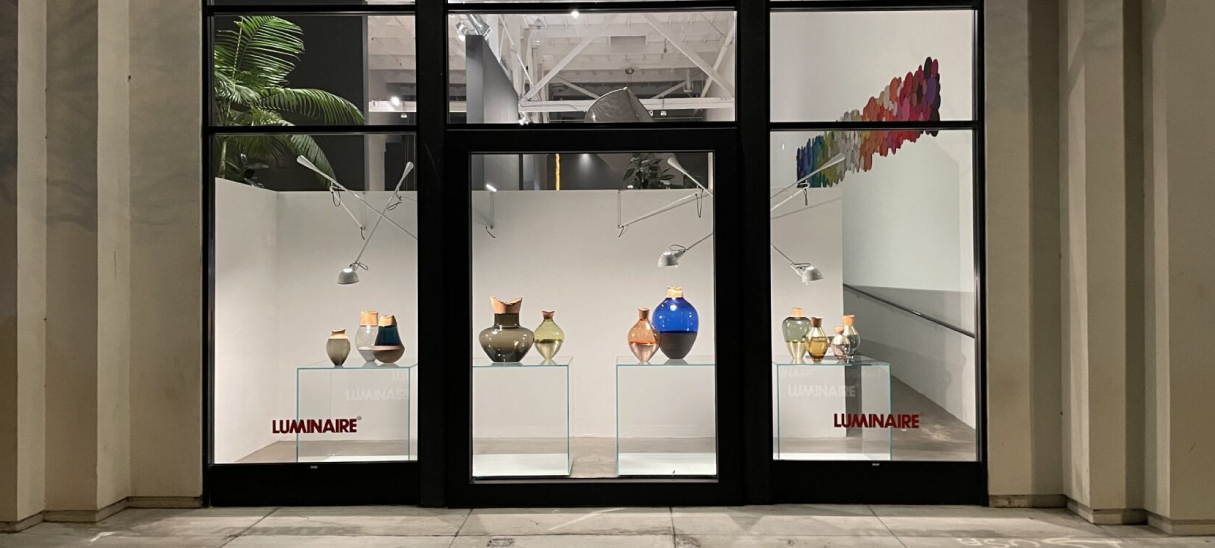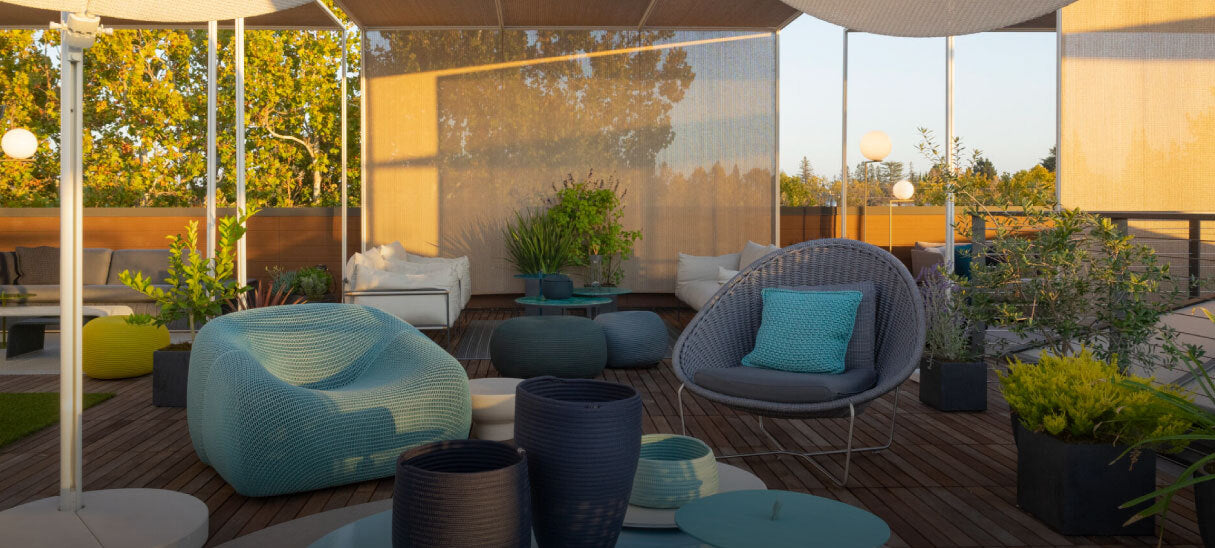Founded on curiosity, conviction, and cultural experimentation, Driade defines itself as aesthetic workshop, one with a history of working closely with designers who are as in touch with their contemporary climate as they are in always thinking outside of the box. In June 1986, Luminaire welcomed Luisa Acerbis of Driade to introduce some of the company’s select furnishings and objects to the Miami public in an exhibition at the Coral Gables Showroom.
Philippe Starck, Enzo Mari, Achille Castiglioni and Antonia Astori were some of the designers represented in the exhibition, and Acerbis focused specifically on their work in her presentation at Luminaire. Starck, notorious as a playful design jester, began working with Driade in 1985. He often animates his designs, naming them as if they were characters, living beings, in their own right. In 1986, he designed Lola Mundo for Driade, a black stained ash chair with a graceful, armless seat and cast aluminum legs, with a form that made them seem as though they could walk or dance on their own.
The Enzo Mari Sof Sof chair was also on display, designed for Driade in 1971. The Sof Sof anticipated the trend in the 1970s towards lower-tech, less expensive methods of production. The flexibility of the chair is obtained by special side connection between seat and back. Astori’s popular modular design system was likewise in the showroom, and like all pieces on display, created an interactive experience between her work and those who viewed it.
While the pieces Driade produces are sculptural, decorative objects, they are likewise remarkably functional designs. Experimenting with ideas through form is important to Driade, often using design to critique social, cultural, and professional landscapes within the design community and the world at large. However, the high regard for functional purpose is not lost on Driade; rather, the works make one more aware of how they must interact with the objects in their surroundings, and, as visitors of the Driade exhibit discovered, heighten a sense of awareness in the user.
Tuesday, July 1, 1986

